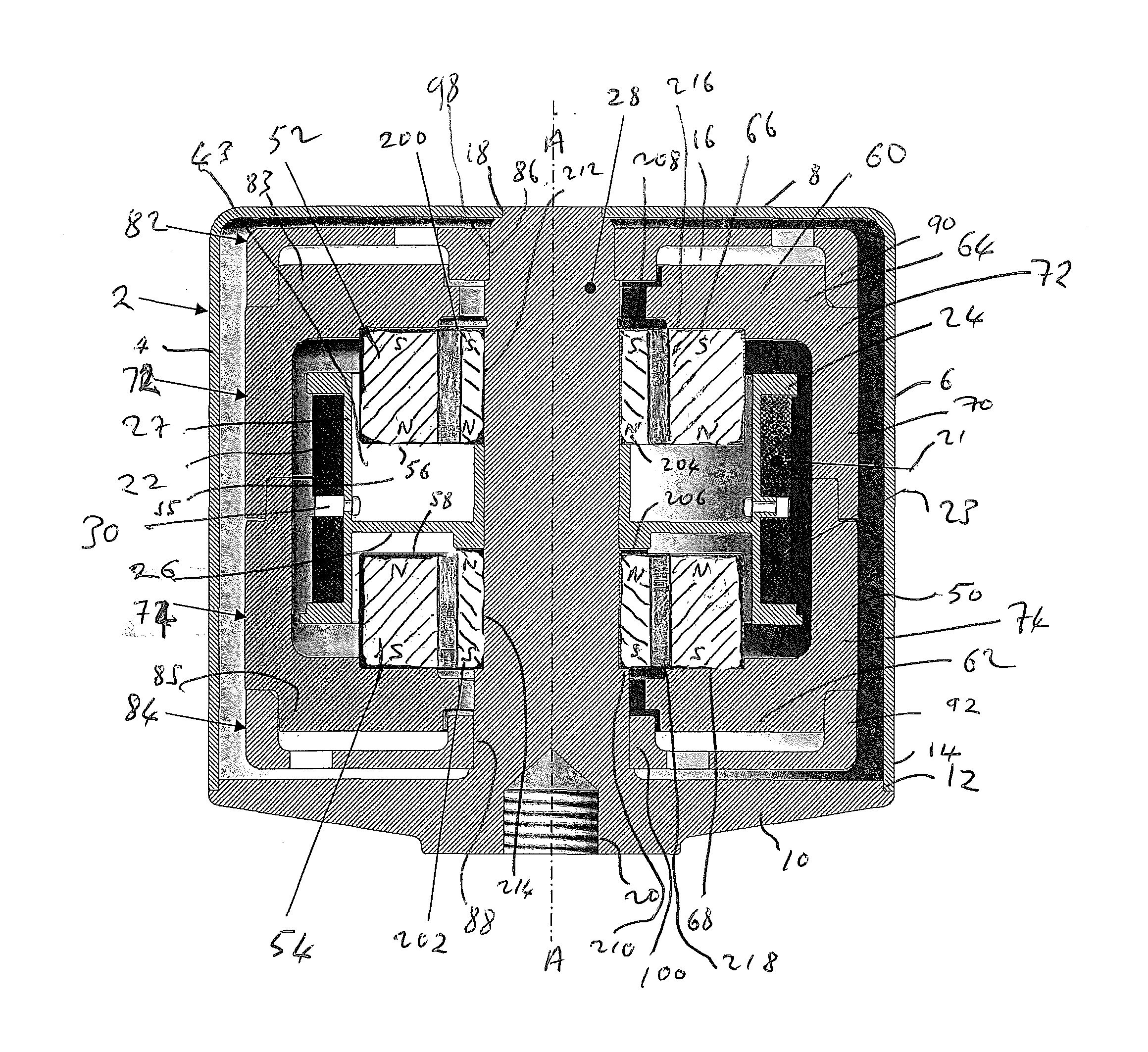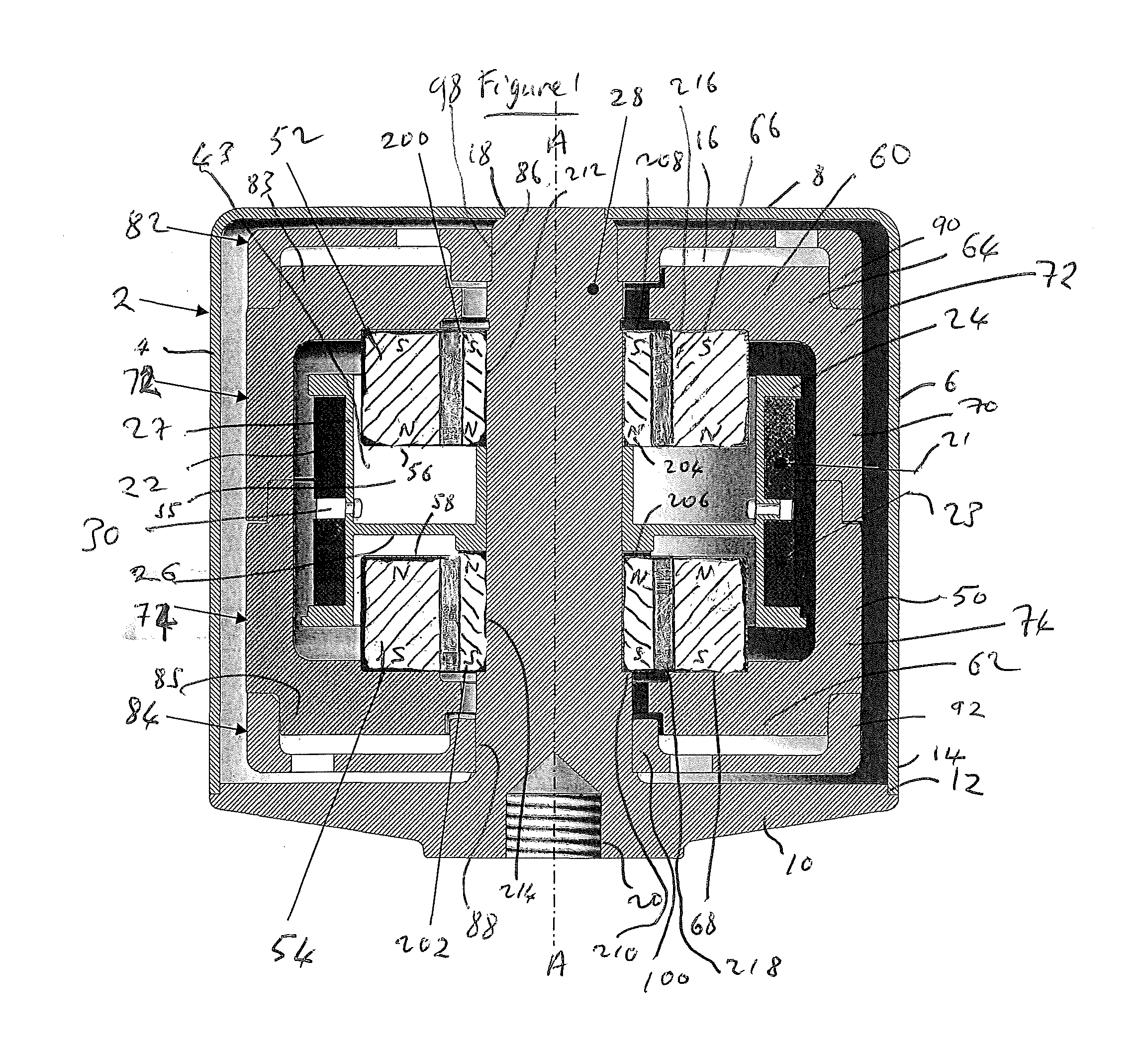electromechanical generator for converting mechanical vibrational energy into electrical energy
a generator and mechanical technology, applied in the direction of mechanical vibration separation, dynamo-electric machines, magnetic circuit shapes/forms/construction, etc., can solve the problems of not being widely available, reducing power output, and general bandwidth reducing power output, so as to reduce moving mass, reduce eddy current, and move fast
- Summary
- Abstract
- Description
- Claims
- Application Information
AI Technical Summary
Benefits of technology
Problems solved by technology
Method used
Image
Examples
Embodiment Construction
[0028]The electromechanical generator of the present invention is a resonant generator known in the art as “velocity-damped” where all of the work done by the movement of the inertial mass relative to the housing is proportional to the instantaneous velocity of that movement. Inevitably, a portion of that work is absorbed overcoming unwanted mechanical or electrical losses, but the remainder of the work may be used to generate an electrical current via a suitable transduction mechanism, such as the electrical coil / magnetic assembly described below.
[0029]FIG. 1 shows an electromechanical generator 2 for converting mechanical vibrational energy into electrical energy in accordance with a first embodiment of the present invention. The electromechanical generator 2 comprises a housing 4. The housing 4 comprises an annular outer peripheral wall 6, an integral circular lid 8 and a circular base 10. The base 10 is securely fitted at its circular edge 12 to a lower edge 14 of the outer peri...
PUM
 Login to View More
Login to View More Abstract
Description
Claims
Application Information
 Login to View More
Login to View More - R&D
- Intellectual Property
- Life Sciences
- Materials
- Tech Scout
- Unparalleled Data Quality
- Higher Quality Content
- 60% Fewer Hallucinations
Browse by: Latest US Patents, China's latest patents, Technical Efficacy Thesaurus, Application Domain, Technology Topic, Popular Technical Reports.
© 2025 PatSnap. All rights reserved.Legal|Privacy policy|Modern Slavery Act Transparency Statement|Sitemap|About US| Contact US: help@patsnap.com



